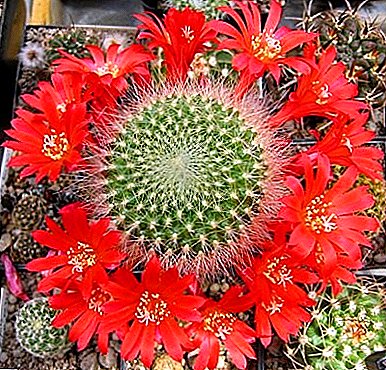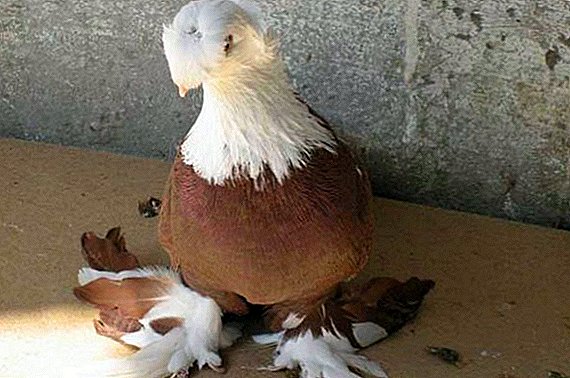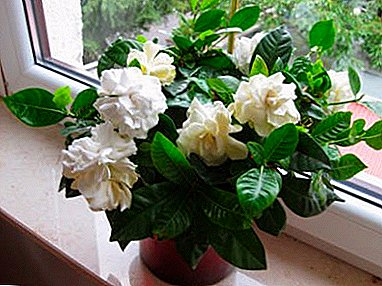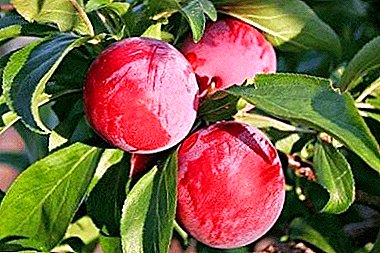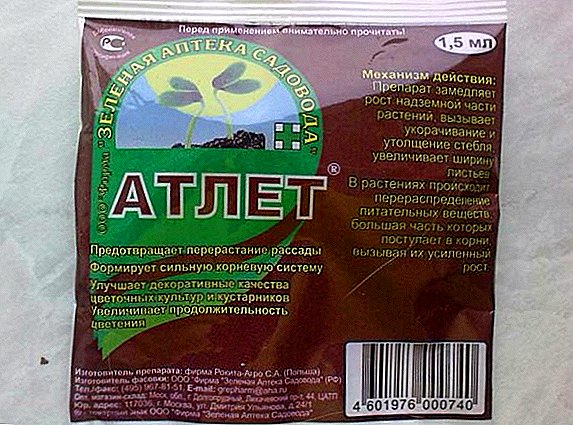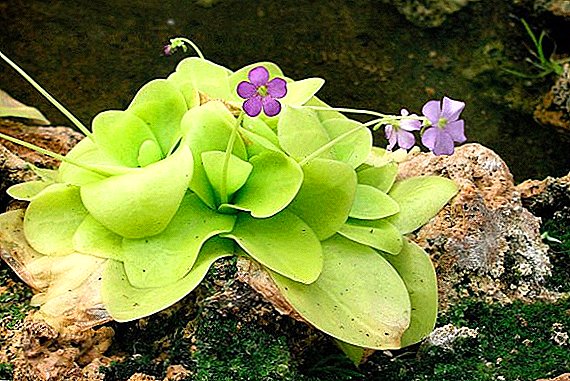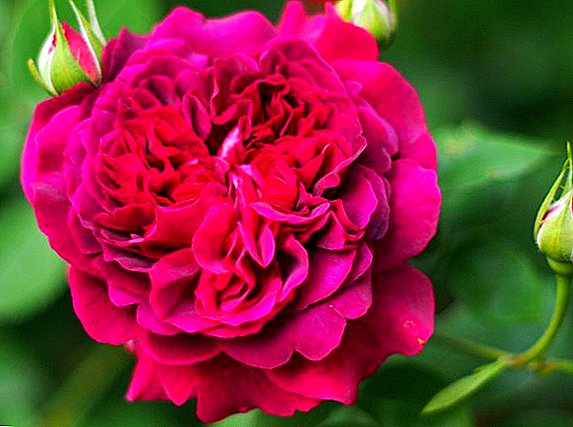 English roses of the "William Shakespeare" variety are one of the most beautiful and most suitable roses for cultivation in our climatic conditions. If you intend to diversify your site with rose bushes - this variety will be the best choice for you due to its unpretentiousness to the growing conditions, low susceptibility to various diseases and excellent external parameters.
English roses of the "William Shakespeare" variety are one of the most beautiful and most suitable roses for cultivation in our climatic conditions. If you intend to diversify your site with rose bushes - this variety will be the best choice for you due to its unpretentiousness to the growing conditions, low susceptibility to various diseases and excellent external parameters.
In this article you will find a lot of information about the rose "William Shakespeare", her photo and description.
Breeding history
This variety of roses was bred by the famous English breeder David Austin in 1987: the idea was to make a flower of the class of srubs, which would be characterized by increased resistance to various diseases and pests affecting this class of plants. Despite achieving some success in this field, the variety was still too susceptible to rust and powdery mildew.
Did you know? William Shakespeare, in whose honor this rose was named, is recognized as a man of the millennium.
In 2000, this variety was further improved., got even more resistance to diseases and corrected the flaw of the previous variety, concerning increased susceptibility to certain diseases. This flower also received increased frost resistance (capable of tolerating temperatures down to -26 ° C).
Description and characteristics
This variety is a stunning beauty. tall plant, the stems of which are crowned with velvet-red flowers, later turning into bright purple. Separate mentions are worthy of the size of the flowers - some of them reach a diameter of 10-12 cm. Initially, the cup-like shape of the flower at the time of its disclosure takes a flatter shape. Each flower contains up to 70 petals, which are arranged in the form of brushes. The duration of flowering of each flower is about two weeks.
Did you know? David Austin notes that, according to his personal opinion, "William Shakespeare 2000" is without a doubt the best red rose in existence today.
Young shoots bloom in a fairly short time, and the flowers themselves are characterized by a unique, peculiar only for roses aroma with light violet notes. The flowering period - from early June to early September. The bush is characterized by rapid growth, erect, abundant branching and frosted clean green leaves of large size.
Growing conditions
Despite the overall unpretentiousness of English roses, there are still a few rules that will allow you to greatly facilitate the process of planting and caring for them. By creating for these flowers the right and comfortable conditions for growth, you can considerably prolong their flowering period and accelerate their growth rates.
Heat and lighting
Variety of roses William Shakespeare refers to the light-loving plants. In this regard, it is recommended to disembark at well-lit places. Ideal if your flower will be in the sun throughout the daylight hours. But you need to remember that the flowers of this plant have a rather poor resistance to the wind, flying around with its strong, squally gusts. Therefore, at the same time, it is recommended to choose places for planting that would be protected from drafts.
Lovers of beauty depending on the destination will suit different types of roses - ground cover, tea, wrinkled, climbing, shrub, standard.
Soil type
For planting this flower loamy, moisture-consuming, slightly acidic, humus-rich soils are best suited. This variety does not tolerate excess moisture, and therefore it is recommended to establish adequate drainage in the area planned for planting. Excessive accumulation of groundwater can lead to rotting of the roots of the plant, which ultimately can cause its death. 
Preparation and planting seedlings
Before planting seedlings in open ground, they must be subjected to a small treatment - hold for 4-5 hours in water, and then remove from them all damaged roots and shoots. Landing is best done in April, when the soil becomes warm enough, or in the autumn, before the onset of frost.
An approximate algorithm for planting flowers is as follows:
- A drainage mixture consisting of 2 parts of sand, 1 part of peat, 3 parts of manure and 2 parts of fertile soil is placed in the harvested hole, not less than 40x50 cm in size.
- The roots of the seedling are straightened in such a way that they enter the well to its full length.
- A young bush is placed in the well, then it is covered with soil, slightly compacting it.
- Next is to make abundant watering the plant with water, and after absorbing the liquid - spud it.
Important! The rose should be positioned so that the grafting site is deepened by 2-4 cm in case it is light soil, and by 7-10 cm if heavy.

Grade Care
In general, the care of this flower does not conceal any special tricks: everything is pretty standard, but there are several aspects on which it is worthwhile to focus attention.
Watering
It is necessary to irrigate this variety once a week, and on hot summer days - every three days. The rate of moisture under each bush - 10 liters. It is recommended to carry out the procedure early in the morning or in the evening, and after moisture is absorbed, it is necessary to loosen the soil around the plants and remove the weeds that grow around your bush.
Fertilizer
Due to the fact that this variety of roses has a rather fast growth rate, they need additional frequent dressings. The first feeding is made in the spring, with the beginning of the formation of fresh shoots in the bushes. It can consist of organic substances, such as compost or, for example, manure, and of mineralized fertilizers. Feed must be made at intervals of two weeks until the end of July. 
Important! In order to stop the vegetative growth of the bush, in the late summer and early autumn, it is necessary to apply potassium monophosphate. This will help your roses to winter well.
Pruning
The first pruning time comes in early spring, when, after removing the winter shelter, all the frozen and dried shoots are pruned. Next, the bush should be shaped - half of the weak stems are cut off, and by one third those that look thicker. In the future, in order to extend the flowering time, in the course of the warm period it is necessary to prune the withered flowers.
Protection against diseases and pests
As noted earlier, this variety has a high resistance to diseases and pests that usually affect roses, but under extremely unfavorable conditions, it can still become infected with a particular disease. Here is a list of them and a short list of countermeasures:
- Mealy dew. It is necessary to pluck and burn the affected shoots, and then process the bush 2% soap-copper emulsion or 30% solution of iron sulphate.
- Black spot. After removal of all affected parts from the plant, it is worthwhile to carry out treatment with a 1% solution of Bordeaux mixture or a 0.1% solution of basezol.
- Rust. It is necessary to remove the parts of the plant involved in the process, then process the rose with a copper-soap solution, a decoction of nettle or wormwood, or 2% Bordeaux liquid.
- Gray rot. Since the development of this disease contributes to wet weather, feed your roses during such periods with fertilizers that contain manganese.
- The pests that most often affect rose bushes include: caterpillars, spider mites, aphids, pennits slobbering, and rosean scales. Effectively protect your plants from these pests will help the treatment of various solutions of insecticides.

Breeding features
English roses reproduce poorly with the help of seeds, since the offspring obtained in this way do not inherit all the positive properties of their parent. In this regard, for their reproduction using inoculation, dividing the bush, layering and grafting. The latter method is the most reliable, easiest to implement and most used by gardeners.
The best time for harvesting cuttings is autumn.before the first frosts. To determine that the stem is suitable for use as a cutting, you can try to break off a needle from it. If this happens easily, then the stem is suitable for this role. Each stalk should contain 2-3 buds, while the lower cut is made oblique - it should practically fit to the lower bud, and the upper one should be 1 cm from the top one.
Further, all cooked cuttings should be processed using fungicides and substances that stimulate rooting. The bottom leaves are completely removed, and those that are on top, cut off by 1/3. Following this, the cuttings are transplanted into the greenhouse, and they are buried by 2-3 cm. The substrate for the cuttings is purified river sand or perlite. Successful rooting occurs when the cuttings content in air temperature is 22-25 ° C and humidity is 80-90%. There will also be some shade and frequent, light irrigation. After the buds begin to develop, and the first leaves go, it is worth cutting down the spraying and starting to air the greenhouse so that the young bushes can get used to the open air. In winter, young bushes should be kept in wet sand at a temperature not exceeding 2-4 ° C.
Successful rooting occurs when the cuttings content in air temperature is 22-25 ° C and humidity is 80-90%. There will also be some shade and frequent, light irrigation. After the buds begin to develop, and the first leaves go, it is worth cutting down the spraying and starting to air the greenhouse so that the young bushes can get used to the open air. In winter, young bushes should be kept in wet sand at a temperature not exceeding 2-4 ° C.
Shelter for the winter
Before the onset of the first frost, the plant should be protected using the air-dry method. To do this, install a frame made of wood or other durable material over the plant, then pull any nonwoven material with good strength on top of it, after which the ends of the material should be firmly pressed to the ground so that there are no gaps. Shelter can be removed with the onset of spring after the average daily temperature will exceed 4-6 ° C.
So, as you could see, the rose "William Shakespeare" occupies a very special place in the encyclopedia of house plants. I would like to wish good luck to all gardeners who have decided to grow this variety of roses in their area. Let your flowers bring you a huge amount of joy and other positive emotions.



